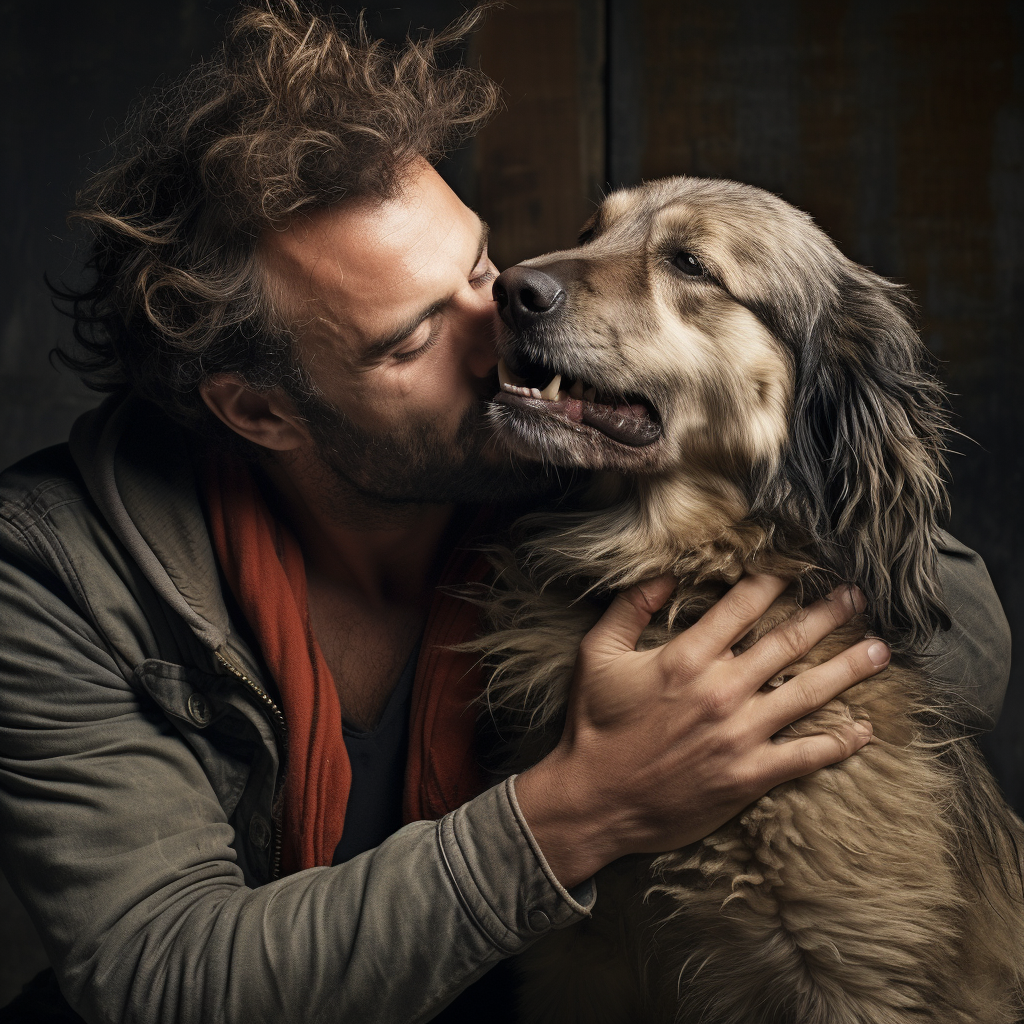The behavior of dogs licking their owners is a multifaceted phenomenon that warrants careful examination. This instinctual action can signify a range of motivations, from expressing affection and fostering social bonds to communicating needs or emotions. Additionally, the sensory experiences associated with licking may provide insight into a dog’s understanding of its environment and its owner’s emotional state. However, the underlying reasons for this common behavior extend beyond mere affection, inviting a deeper exploration into the psychological and physiological implications of canine licking. What other motivations might be at play? Discover the diverse motivations behind why dogs lick their owners, from affection to communication, and explore the surprising insights this behavior reveals.
Key Takeaways
- Dogs lick their owners to express affection and emotional attachment, strengthening their bond.
- Licking serves as a form of communication, signaling a desire for attention or reassurance.
- The act of licking allows dogs to explore their environment through taste and smell.
- Licking can provide comfort and stress relief, mimicking a mother dog’s grooming behavior.
- Excessive licking may indicate anxiety or stress, requiring attention to the dog’s emotional state.
Instinctual Behavior

Many dog owners may find themselves pondering the reasons behind their pets’ frequent licking behaviors. This instinctual behavior is deeply embedded in canine ancestry, serving multiple purposes that extend beyond mere affection display.
In the wild, dogs engage in licking as a social behavior, facilitating bonding and tactile communication within their packs. Puppies instinctively lick their mothers to stimulate feeding, which fosters an early emotional connection and reinforces essential survival skills.
As domestic companions, dogs carry these instinctual behaviors into their interactions with humans. Licking can signify submission, an attempt to appease, or a desire for attention, reflecting the dog’s understanding of social hierarchies.
Moreover, this behavior can also be a method of exploration, as dogs utilize their tongues to gather information about their environment and the beings within it.
Understanding this multifaceted canine behavior can help owners appreciate the emotional nuances of their pets’ actions. By interpreting licking not just as a simple gesture but as a complex form of communication, owners can foster deeper emotional connections with their dogs, enhancing the bond that exists between them.
Affection and Bonding
Affectionate licking is one of the most recognizable ways dogs express their emotional attachment to their owners. This behavior is rooted in the concept of canine affection, which serves as a vital mechanism for social bonding. When dogs lick their owners, they engage in a form of tactile communication that fosters a sense of belonging and connection. This act can be seen as a manifestation of their affection, reinforcing the bond between human and canine.
The interaction often leads to positive reinforcement, where the dog receives attention, affection, or even treats in response to their licking. This cycle of mutual reinforcement strengthens the emotional ties between the two species, nurturing a relationship built on trust and companionship.
Additionally, licking can elicit positive emotional responses from owners, enhancing their feelings of attachment and love for their pets.
In essence, licking is not merely a behavioral quirk; it is a profound expression of the social bonds that exist within the human-dog relationship. Understanding this behavior allows owners to appreciate the depth of their pets’ affection, ultimately enriching the shared experience of companionship.
Communication Signals
While the affectionate licking behavior of dogs serves to strengthen bonds with their owners, it also functions as a significant form of communication. In the domain of pet psychology, licking can be interpreted as a complex communication signal that conveys various emotions and intentions. When dogs lick their owners, they may be expressing a desire for attention, reassurance, or even an invitation for interaction. This behavior often elicits positive responses from owners, reinforcing the cycle of communication.
Moreover, the context in which licking occurs can provide insights into its meaning. For instance, a dog that licks in response to its owner’s laughter or petting may be engaging in a reciprocal interaction, thereby strengthening their emotional connection. Conversely, excessive licking may signal stress or anxiety, prompting owners to assess their pet’s emotional state.
Understanding these communication signals is essential for fostering a deeper bond between dogs and their owners. By interpreting licking within the broader spectrum of owner interaction, pet owners can enhance their relationship with their furry companions, promoting mutual understanding and emotional well-being.
This empathetic approach encourages owners to respond sensitively to their dog’s needs, ultimately nurturing a harmonious relationship.
Taste and Smell Attraction
The attraction of dogs to the taste and smell of their owners plays an essential role in their licking behavior. Dogs possess an extraordinary sense of smell, estimated to be between 10,000 to 100,000 times more sensitive than that of humans. This olfactory prowess allows them to engage in sensory exploration, deciphering a wealth of information from their owners’ unique scents.
These scents can reveal emotional states, health conditions, and even dietary habits, contributing to the dog’s understanding and connection to their human companions.
Taste perception further enhances this bond. Dogs often lick as a way to explore flavors, which can include residual food particles, skin secretions, or even pheromones released during emotional interactions. This licking habit is not merely an act of affection; it is a complex behavior rooted in instinct and sensory curiosity.
For dogs, the act of licking can be a means of fostering closeness and belonging. By engaging with their owner’s taste and smell, they deepen their emotional ties and affirm their place within a social structure.
Understanding this aspect of licking behavior can foster a greater appreciation for the profound relationship between dogs and their owners.
Stress Relief and Comfort
Licking behavior in dogs is not solely driven by taste and smell; it also serves as a mechanism for stress relief and comfort. This behavior may be instinctual, as it mimics the soothing actions of a mother dog grooming her puppies. When dogs lick their owners, it often signifies ownership recognition, reinforcing the bond between them. This act can elicit a sense of calm for both the dog and the human, highlighting the emotional connections inherent in pet ownership.
Furthermore, licking can trigger the release of endorphins in dogs, promoting feelings of well-being and reducing anxiety. For owners, the affectionate reciprocation fosters a nurturing environment that alleviates stress, creating a symbiotic relationship essential for mental health.
The implications of this behavior extend beyond mere affection; they can positively impact both the dog’s and owner’s psychological states. In understanding these dynamics, it becomes evident that licking serves as a powerful tool for stress relief, promoting emotional stability and enhancing the overall health of both the pet and the owner.
Acknowledging this can deepen the sense of belonging and companionship that many pet owners cherish.
Finally to mention,
To sum up, the multifaceted motivations behind dogs licking their owners encompass instinctual behaviors, expressions of affection, and communication signals, intertwined with sensory attractions and emotional responses. This behavior serves as a bridge, solidifying the bond between canine companions and their human counterparts. Like a gentle wave lapping at the shore, the act of licking not only conveys love and reassurance but also fosters emotional resilience, benefiting both parties in the intricate tapestry of their shared lives.



